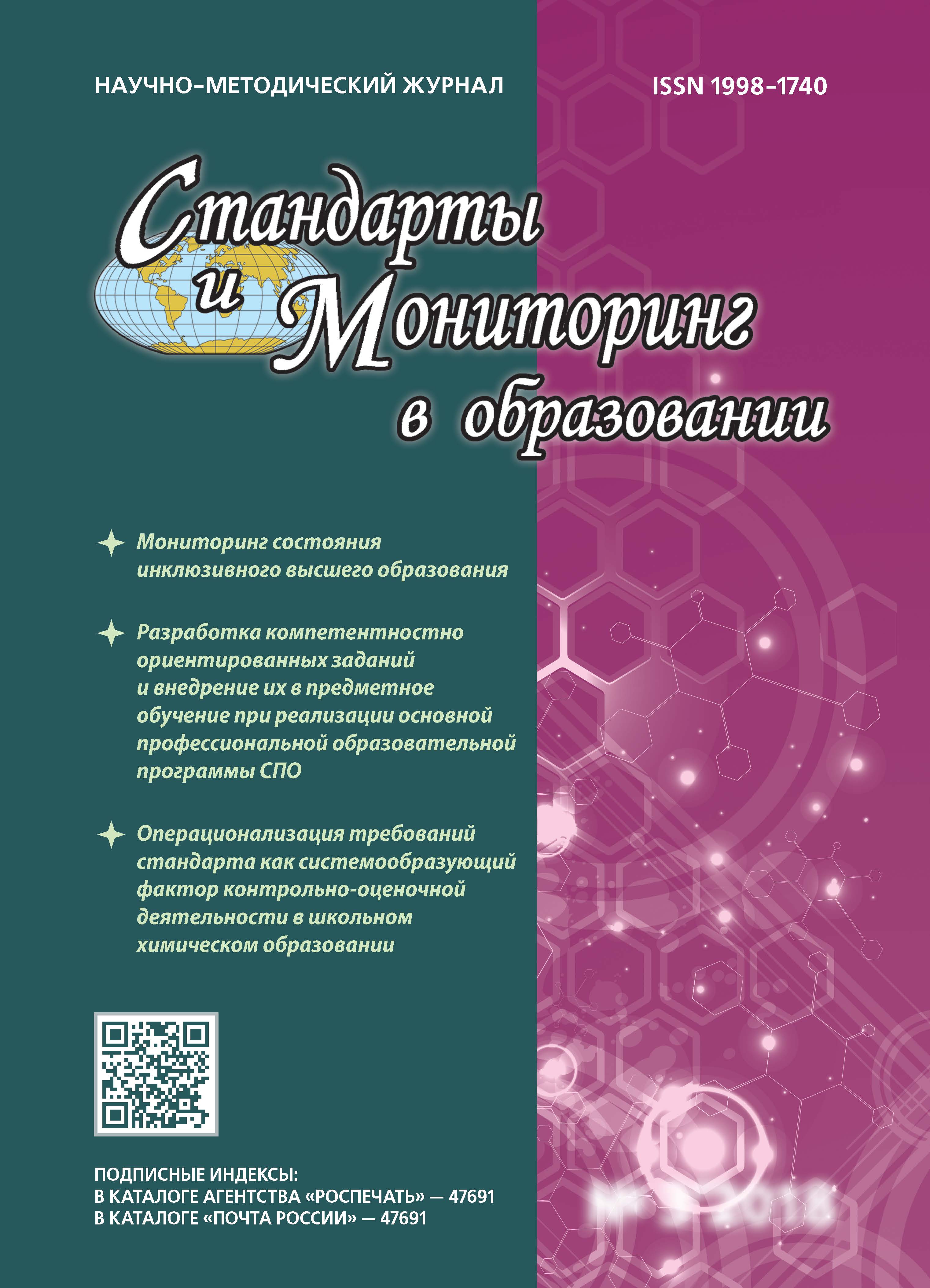Glazov, Izhevsk, Russian Federation
In the study of geometry, the student’s assimilation of the reasonings carried out in the theorems proofs has great importance. The diffi culty of understanding reasonings depends on the number of logical links, terms diversity and semantic complexity of mathematical statements. The article proposes the method for determining the didactic complexity of the theorems proofs and the results of its application. The essence of the method consists in “measuring” the amount of semantic information in theorem formulation, picture, reasonings and multiplication of the received volume with the diversity indicator of the terms used. For this, the theorem statement, the picture and the actual proof should be presented in text form, and the resulting file should be analyzed using a special computer program which calculates the number of diff erent terms in this text, takes into account their complexity, and fi nds the diversity indicator. The expert estimates complexity of terms by counting the words included in its defi nition and by the method of paired comparisons. An assessment of 12 frequently used theorems was carried out; this allowed them to be ordered by complexity. For each theorem the proof volume, the total amount of semantic information in it, the terms diversity indicator, the logical reasoning number, the information folding coeffi cient and the didactic complexity were determined.
didactics, theorem proof, logical reasoning, semantic information, complexity, knowledge folding
1. Gel'fman E.G., Holodnaya M.A. Psihodidaktika shkol'nogo uchebnika. Intellektual'noe vospitanie uchashchihsya [Psychodidactics of a school textbook. Intellectual education of students]. St.-Petersburg: Piter Publ., 2006. 384 p.
2. Episheva O.B., Krupich V.I. Uchit' shkol'nikov uchit'sya matematike: formirovanie priemov uchebnoj deyatel'nosti [To teach schoolchildren to study mathematics: the formation of teaching methods]. Moscow: Prosveshchenie Publ., 1990. 128 p.
3. Zhuk L.V. Osobennosti myslitel'nogo processa v oblasti geometrii [Features of the thought process in the field of geometry]. Al'manah sovremennoj nauki i obrazovaniya [Almanac of modern science and education]. 2011, I. 3 (46), pp. 135-137.
4. Zerkal' O.V. Semanticheskaya informaciya i podhody k ee ocenke. Chast' 1. Semantiko-pragmaticheskaya informaciya i logiko-semanticheskaya koncepciya [Semantic information and approaches to its assessment. Part 1. Semantic-pragmatic information and logical-semantic concept]. Filosofiya nauki [Philosophy of Science]. 2014, I. 1, pp. 53-69.
5. Krejdlin G.E., Shmelev A.D. Matematika pomogaet lingvistike [Mathematics helps linguistics]. Moscow: Prosveshchenie Publ., 1994. 176 p.
6. Lerner I.Ya. Didakticheskie osnovy metodov obucheniya [Didactic foundations of teaching methods]. Moscow: Pedagogika Publ., 1981. 186 p.
7. Lyuger D.F. Iskusstvennyj intellekt: strategii i metody resheniya slozhnyh problem [Artificial intelligence: strategies and methods for solving complex problems]. Moscow: «Vil'yame» Publ., 2003. 864 p.
8. Majer R.V. Kontent-analiz shkol'nyh uchebnikov po estestvenno-nauchnym disciplinam [Content analysis of school textbooks in the natural sciences]. Glazov: Glazov. gos. ped. in-t Publ., 2016. 137 p.
9. Majer R.V. Ocenka informativnosti osnovnyh polozhenij shkol'nogo kursa matematiki [Assessment of the information content of the main provisions of the school course in mathematics]. Standarty i monitoring v obrazovanii [Standards and monitoring in education]. 2019, I. 2, pp. 38-45.
10. Mikk Ya.A. Optimizaciya slozhnosti uchebnogo teksta: V pomoshch' avtoram i redaktoram [Optimization of the complexity of the educational text: To help authors and editors]. Moscow: Prosveshchenie Publ., 1981. 119 p.
11. Naumov I.S., Vyhovanec V.S. Ocenka trudnosti i slozhnosti uchebnyh zadach na osnove sintaksicheskogo analiza tekstov [Evaluation of the difficulty and complexity of educational tasks based on parsing of texts]. Upravlenie bol'shimi sistemami: sbornik trudov [Management of large systems: proceedings]. 2014, I. 48, pp. 97-131.
12. Sohor A.M. Sravnitel'nyj analiz uchebnyh tekstov (na materiale uchebnikov fiziki) [A comparative analysis of educational texts (based on material from physics textbooks)]. Problemy shkol'nogo uchebnika [Problems of a school textbook]. Moscow: Prosveshchenie Publ., 1975, pp. 104-117.
13. Stolyar A.A. Logicheskoe vvedenie v matematiku [A logical introduction to mathematics]. Minsk: «Vyshejsh. Shkola» Publ., 1971. 224 p.
14. Shalak V.I. Sovremennyj kontent-analiz. Prilozheniya v oblasti: politologii, psihologii, sociologii, kul'turologii, ekonomiki, reklamy [Modern content analysis. Applications in the field of: political science, psychology, sociology, cultural studies, economics, advertising]. Moscow: Omega-L Publ., 2004. 272 p.
15. Davis B., Sumara D. Complexity and Education: Inquiries Into Learning, Teaching, and Research. - Mahwah, New Jersey, London, 2006. - 201 p.
16. White M.D., Marsh E.E. Content analysis: A flexible methodology // Library trends. - 2006. Vol. 55. I. 1. - pp. 22-45.







